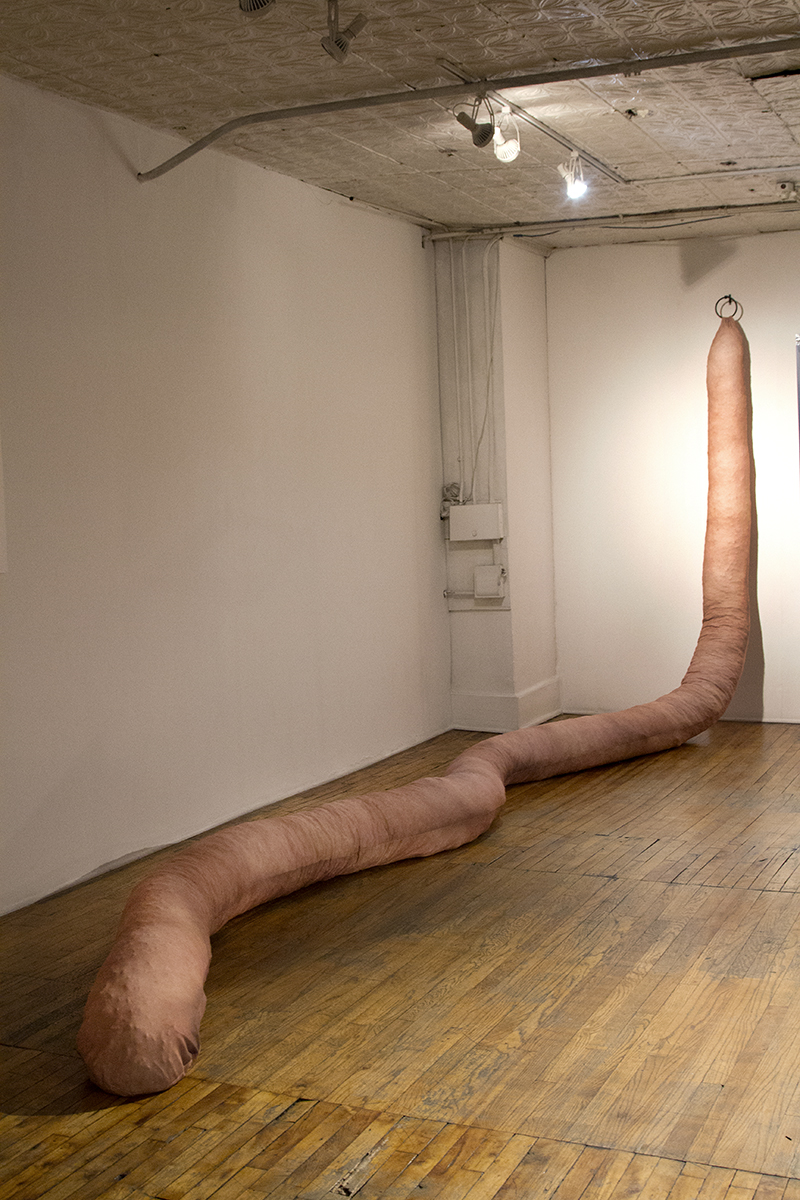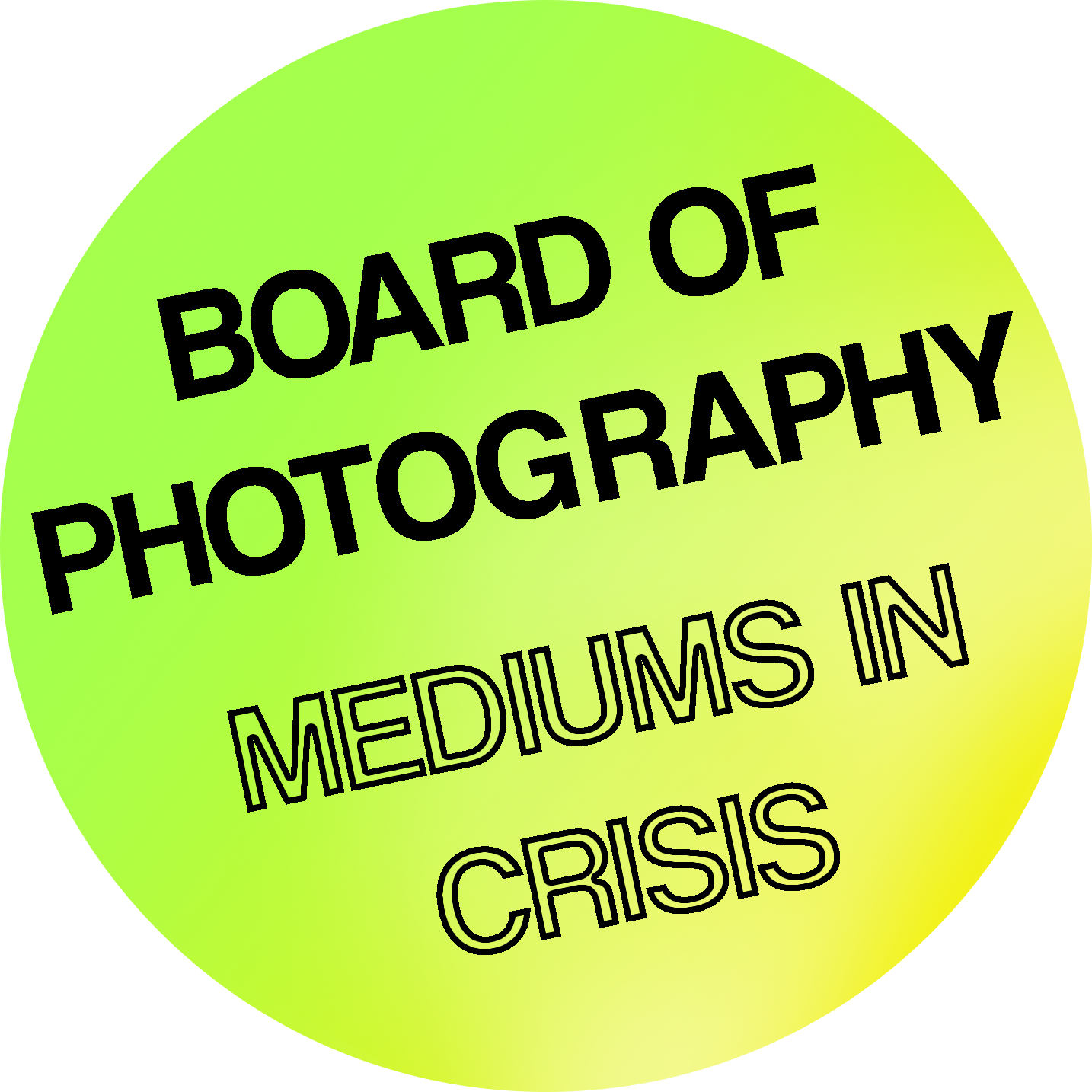Kate Hampel
Desperate Measures
Polyester fabric printed with image of the artist’s skin, cast iron, sand, polystyrene.
Fiber is a medium both in and out of crisis.
In crisis, because degree programs in Fiber are still closing, as they have been for decades. Not long ago the Cleveland Institute of Art folded Fiber and Material Studies into Sculpture, creating a new Sculpture + Expanded Media program. They also relocated their looms and dyeing equipment to a fledgling non-profit space which now hosts students in the same for-credit weaving classes they used to take on campus. What are we to make of this outsourcing of fiber? On the one hand fiber’s tactility and materiality are too interesting to do away with entirely, on the other hand too contingent to maintain.
Market research will of course support their decision. A recent report commissioned by my own midwestern institution put “fiber, weaving, and textile arts” on its dubiously-named top ten list of low-growth fields in the arts.1 It’s true that there are few jobs posted these days for weavers and textile artists positioning themselves as such. This is a dry, dusty crisis, though—a crisis of administrators and market researchers who would have difficulty naming fiber if it wrapped itself in plastic sheeting and neon cord to march in front of them.
Which is exactly the sort of thing that’s happening, joyfully or in resistance, in the actual studios and classrooms where artists study and work. I see this happening where I teach, not just in my own classrooms but more and more often when I’m pulled in for critiques in other media, especially painting. Major exhibitions at museums and art fairs are showing plenty of contemporary fiber work, whether it calls itself that or not—this year’s Frieze made it official with a “Woven” section.2
How can a medium that appears so frequently in contemporary artists’ practices, whatever their material background, be in such decline? Perhaps fiber isn’t a medium in crisis at all but a taxonomy in crisis. Or perhaps it’s a crisis of its own, in which the shuttering of departments and the erasure of a name leads to a gap in material understanding.
My own draw to the medium has always been in part its accessibility—its familiarity, its lack of preciousness, its non-art roots, and the availability of knowledge in non-institutional spaces. At times I idealize this to mean that if you didn’t grow up sewing at home you can probably learn from someone at a public library—a material education with merits arguably equal to those of a high-profile art school. Instead what it allows for is the instant gratification of softness—in all its myriad meanings—and the references of cloth without any depth of material understanding.3 Painters who obsess over the specificity of oils and brushes will reach for the nearest 1-lb. skein of acrylic yarn as if into a material grab-bag when they want to tap into whichever nod to domesticity/gendered labour/kitsch/nostalgia might be needed.
Accessibility is important—I’m not partial to dogma or exclusivity (I actually love seeing painters weave ribbon and twine into their canvases, when it thoughtfully engages both physicality and ideas) but so is acknowledgement. Are these irreconcilable? Must we engage in in-depth study every time we want to adopt a new material? I’m writing this piece coincidentally just after Earl Elowsky wrote on this site about wanting to make quilts, but feeling concerned for the shallow, minor investigation they might be perpetrating.4 This concern is real, and sometimes it does stop me from making work. But—and again, I’m idealizing—hopefully it stops me from making unstudied and uncritical work, and isn’t that something we’d all rather avoid? I’d like to think there’s an approach that navigates the treacherously narrow space between casual [mis]use of a medium, and multiple postsecondary degrees in it. This approach could be a new kind of materialism: one that understands the specificity of content and provenance and can understand that polyester and cotton are as different as acrylic and oil, without tying itself too closely to any one field. Most art is material; material isn’t in crisis. Go ahead, use yarn in your paintings, just please don’t call it string.
Kate Hampel has multiple postsecondary degrees in Fiber and Material Studies and teaches in Sculpture at Ohio University.
1. Hanover Research produced this report in May of 2019, identifying the “top ten most low-growth bachelor’s degree programs nationally i.e., below average student and labor market growth and volume)”. These determinations were based on cross-referenced degree completions in 2017 and 10-year job market projections in the named field, though one wonders if these metrics have any bearing on the value of an arts education or practice.
2. Abrams, Amah-Rose. “Frieze London Shows the Art World Has Cottoned On to Weaving.” The New York Times. Last modified October 3, 2019. https://www.nytimes.com/2019/10/03/arts/frieze-london-woven.html.
3. I am indebted to Elisa Auther for her 2009 book String, Felt, Thread, (University of Minnesota Press) in which she considers at length the differences in creation and reception of works made by artists whose practice was identified with fiber, and artists from backgrounds of painting or sculpture.
4. Elowsky, Earl. “Mediums in Crisis.” Board of Photography. Last modified November 1, 2019. http://www.boardofphotography.com/earl-elowsky

